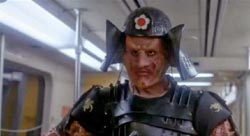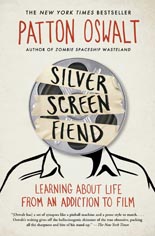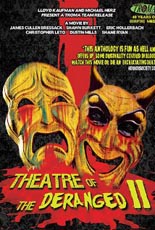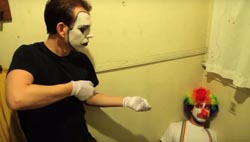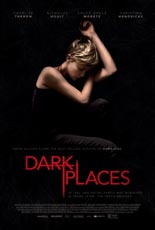
 In a rare nexus of art and commerce, Hollywood has turned a best-selling novel by Gillian Flynn into a critically acclaimed, audience-pleasing smash that’s destined to embed itself in our pop-culture consciousness for decades to come.
In a rare nexus of art and commerce, Hollywood has turned a best-selling novel by Gillian Flynn into a critically acclaimed, audience-pleasing smash that’s destined to embed itself in our pop-culture consciousness for decades to come.
I speak of Gone Girl, of course. One year later came Dark Places. It premiered on VOD.
In 1985, Libby Day was just 8 years old when her mother and sister were brutally murdered in what the media dubbed the “Kansas Prairie Massacre,” for which her teen brother, Ben, was convicted. Three decades down the line, Libby (Charlize Theron, Mad Max: Fury Road) is near-penniless after book royalties and funds from kind strangers have dried up. Naturally, she’s estranged from Ben (Corey Stoll, Ant-Man), who remains behind bars.
 Dire straits are the lone reason why Libby agrees to be the paid special guest at a meeting of true-crime enthusiasts not only fascinated by her case, but convinced of her brother’s innocence. While the amateur organization is called The Kill Club, Libby’s recruiting member (Theron’s fellow Fury Road passenger Nicholas Hoult) promises, “It’s not as weird as it sounds.”
Dire straits are the lone reason why Libby agrees to be the paid special guest at a meeting of true-crime enthusiasts not only fascinated by her case, but convinced of her brother’s innocence. While the amateur organization is called The Kill Club, Libby’s recruiting member (Theron’s fellow Fury Road passenger Nicholas Hoult) promises, “It’s not as weird as it sounds.”
That, in a nutshell, is Dark Places’ largest problem: It’s not as weird as it sounds. In fact, it’s shockingly average, venturing to locales and situations not nearly as twisted as one hopes for, given the sales success of Flynn’s 2009 sophomore book and its use of the 1980s’ satanic-panic hysteria as a major subplot. A mystery is there, which Libby initially is reluctant to touch, but her manner of investigation is less than compelling and the secrets uncovered, disappointing due to sheer implausibility. Not having read the book, I do not know if blame should be assigned to Flynn or writer/director Gilles Paquet-Brenner, whose 2010 film, the low-key Sarah’s Key, generates markedly more suspense out of its slow-cooker of a story, also blessed with a strong female protagonist.
As usual, Theron gives it her all, even if her ever-the-sourpuss character is less than likable. Doing richer work — and all in flashbacks — is Mad Men resident redhead Christina Hendricks as Libby’s hardscrabble mother. She may have had the edge, with this being her second film in a row playing a financially desperate single mom, following last year’s Lost River. —Rod Lott

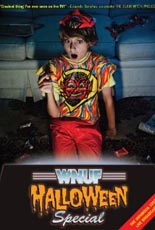
 Originally broadcast on Oct. 31, 1987, the
Originally broadcast on Oct. 31, 1987, the 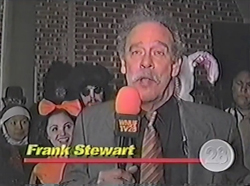
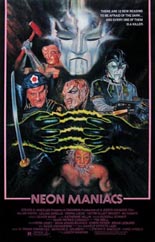
 One cannot credibly discuss
One cannot credibly discuss 